I have to walk before I can run. This has been a constant reminder for myself whenever I would start learning something new. A few days ago, I was able to work on the tasks for the citizen science project smoothly, as the tutorial was easy to follow. After the installation of the MG5aMC software, we have now began to implement this tool in simulating particle collider experiments. In particular, for this week's tasks, we produced a top-antitop pair in proton-proton collisions.
Particles available within the Standard Model
Using MG5aMC, automated simulation and calculation which involves knowledge in particle physics can be performed using regular computers, I used my personal computer with the tasks I've done in this project. The labels of the particles that can be used to define the processes that can be simulated in the software are shown below. MG5aMC is started in a shell through the command: ./bin/mg5_aMC in the folder where the software was unpacked.

Defining the process of interest
In this, we generate a top-antitop pair with a proton-proton collision. The particles correspond to the following labels: proton (p), top quark (t), and antitop quark (~t). There could be different options to produce a top-antitop pair, these can be represented using Feynman diagrams. It's a simple visualization that encapsulates the possible processes that can occur from an initial to a final state.
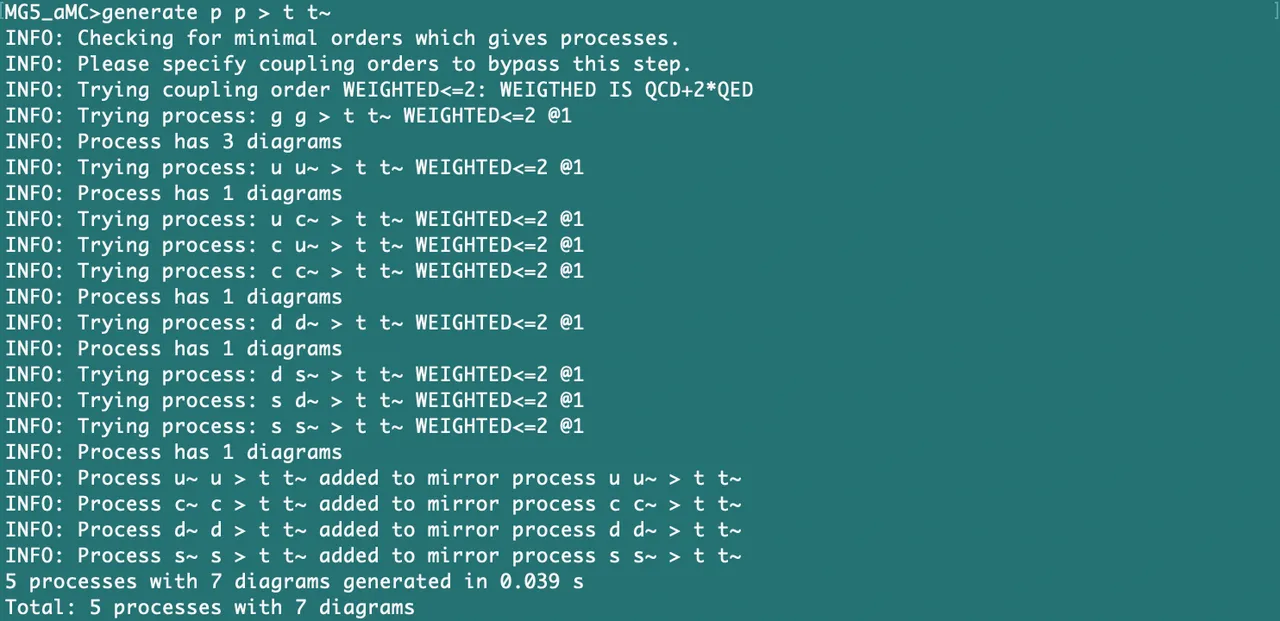
I have compiled the Feynman diagrams related in generating the 5 processes in producing a top-antitop pair. When I was taking an online introductory course in particle physics, I found the Feynman diagram as a simple and powerful way of representing the interactions of the elementary particles.
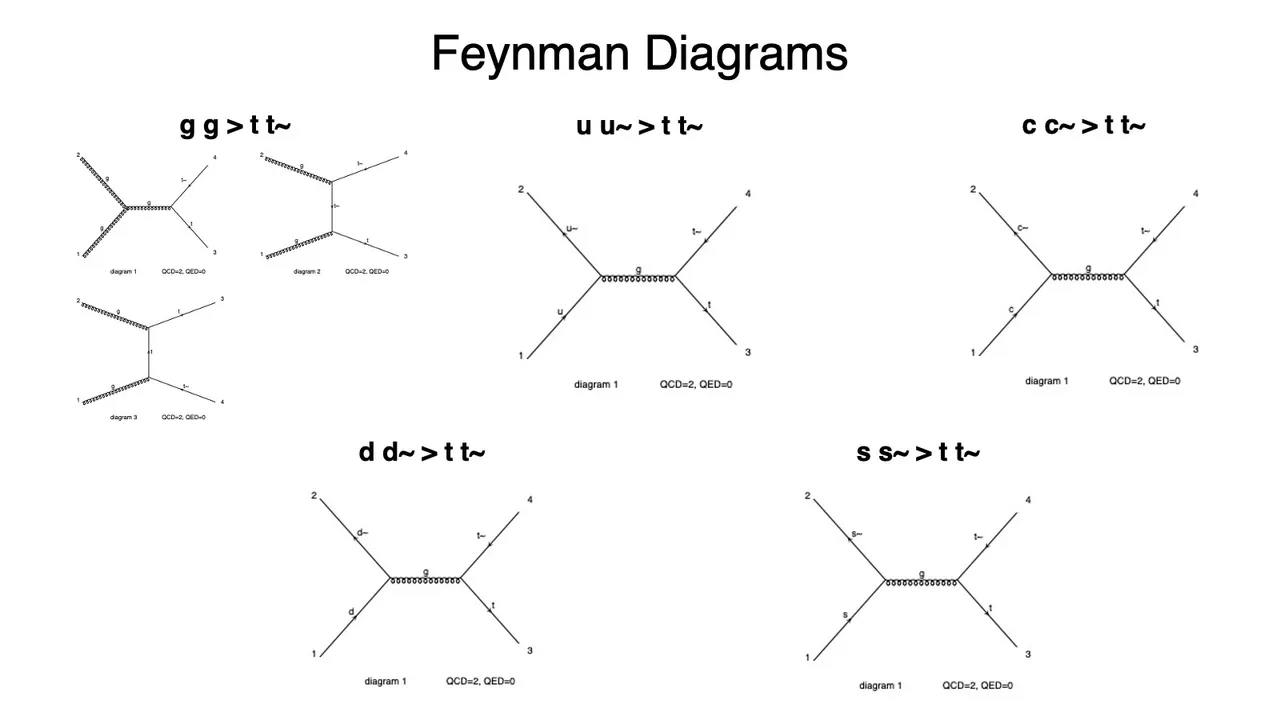
That is also the reason why I named the working directory of the output from the simulation as wobble, from Feynman's wobbling plate story, where his work that earned him a Nobel Prize began. The command output directory_name stores the results of the processes from the Feynman diagrams. The mathematical expressions visualized by these diagrams are converted into a Fortran code, a function that is available in the software we're using.
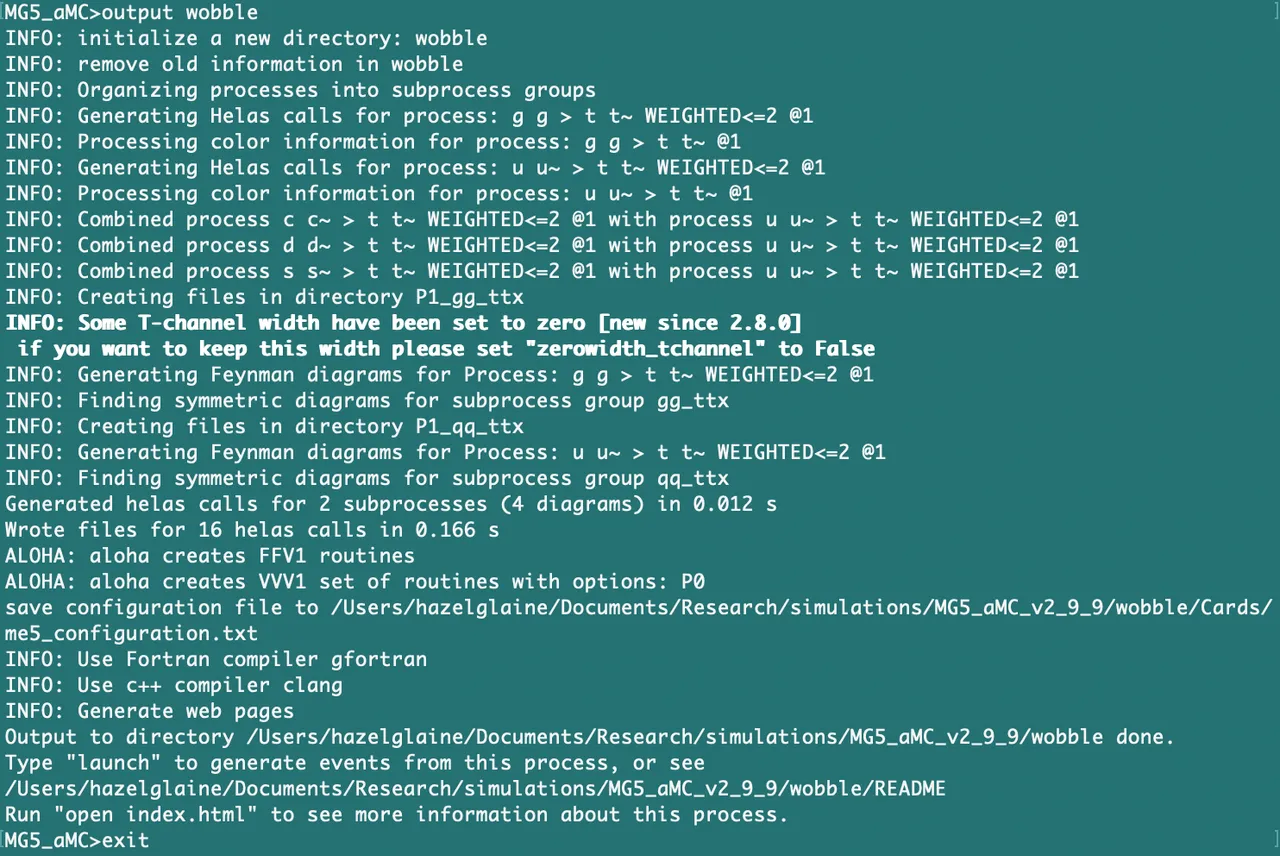
Calculating the rate of the process
By starting MG5aMC again, the command launch directory_name will compile the Fortran code from the previous step, perform an automated calculation, and produce the output of the results. Below is the default menu
where it can be modified to fit our point of interest.
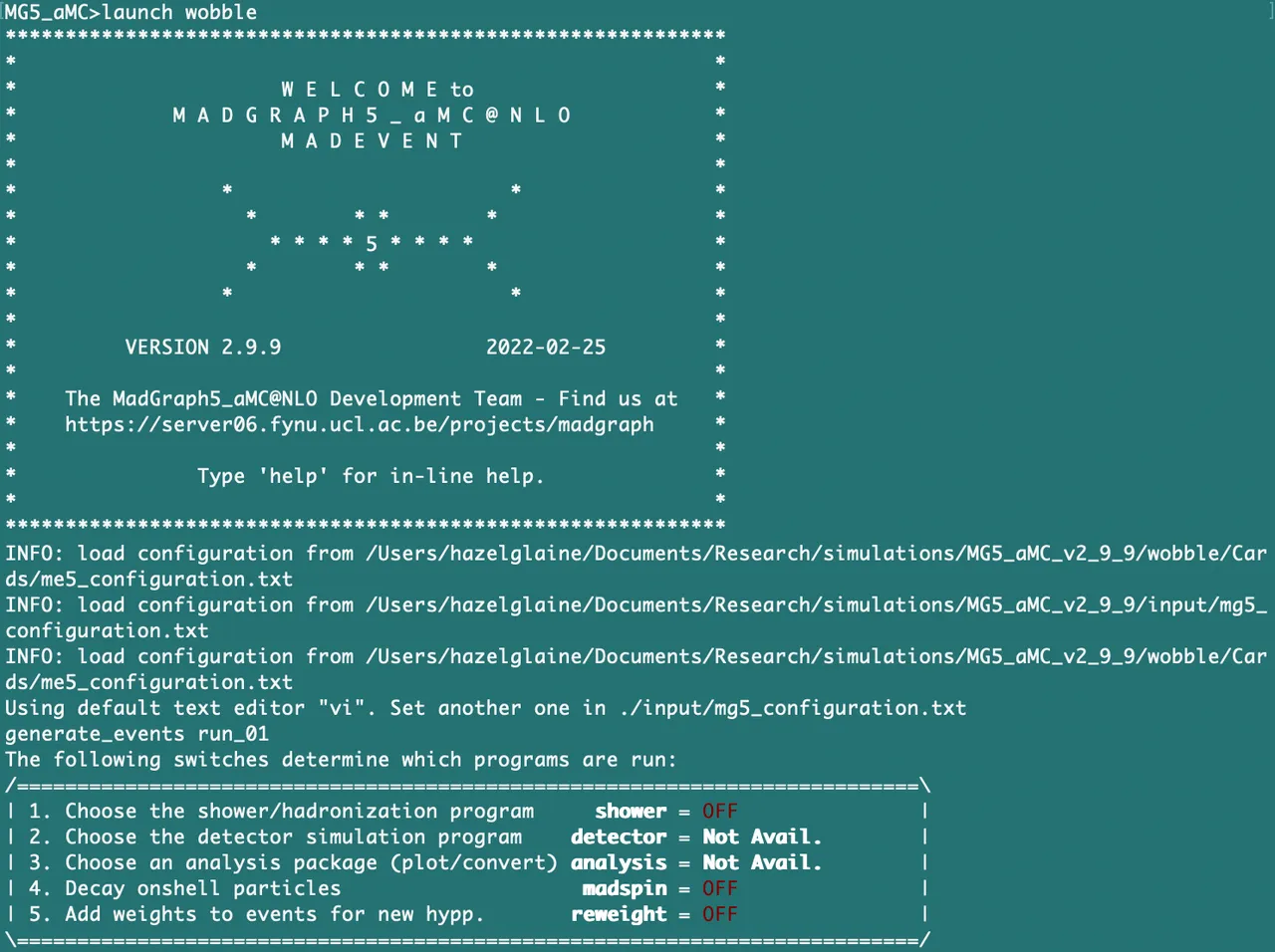
The interactive menu is easy to navigate, options to enable Pythia8 and MadSpin. I am still not familiar with these two packages and the tutorial also reminded me that it's not yet necessary to understand how to interpret these results. So, I was more focused on navigating with the parameters I can tweak.
These are the simulation parameters which follow after enabling the Pythia8 and MadSpin. The four cards mentioned are the following: param_card, run_card, pythia8_card, and madspin_card. Everything was left with its default parameters except for the run_card.
I wasn't sure what editor was used by my command prompt, but by pressing Enter(Return) key, I was able to insert text and change a line in the script of the run_card:
True = use_syst !Enable systematics studies
was changed to
False = use_syst !Enable systematics studies
The changes I made was saved by typing :wq. Followed by these parameters, the simulation part began and ran for a few minutes.
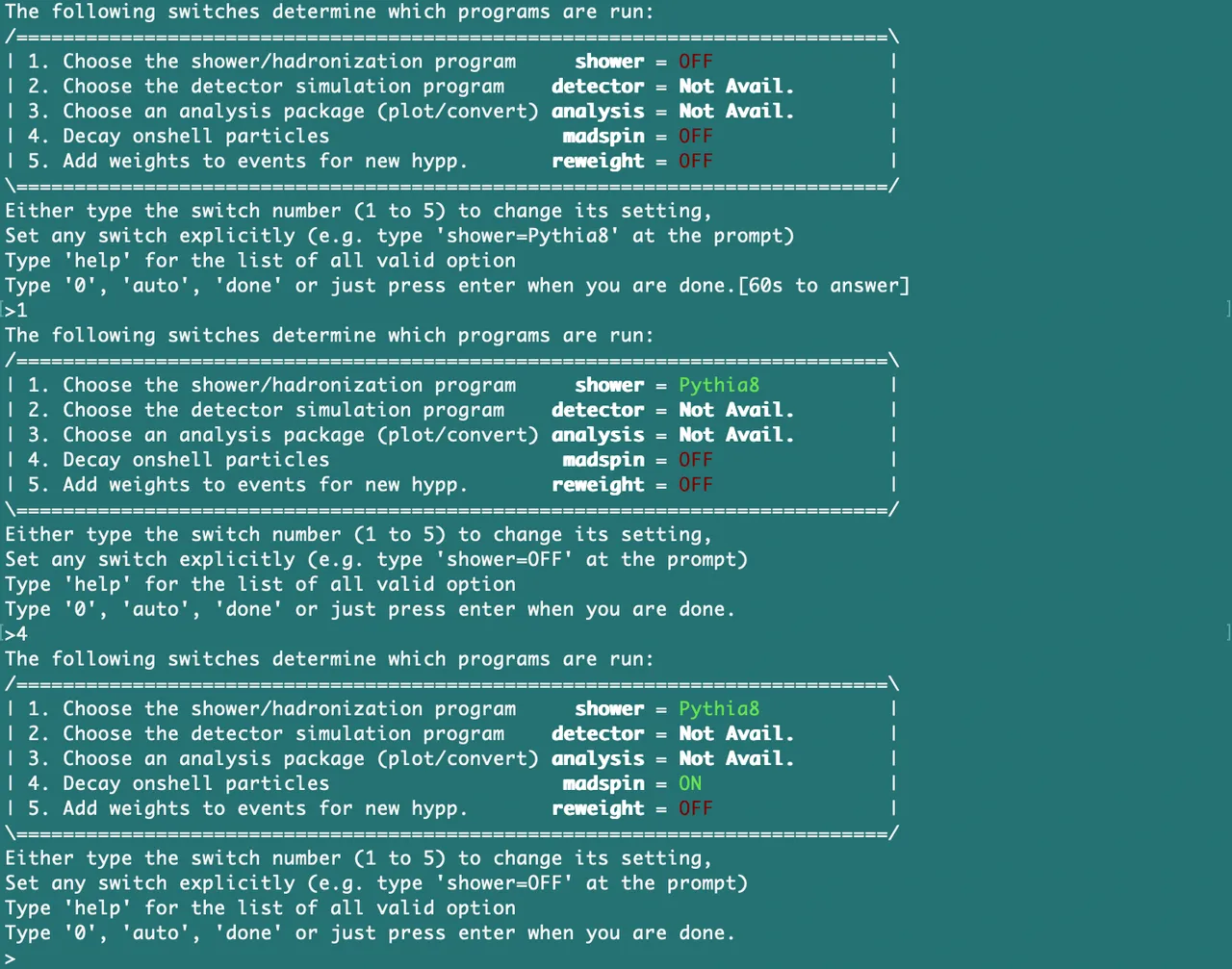
The simulation performed this week resulted a cross-section of 504.1 ± 0.6866 pb which corresponds to the production rate of a top-antitop pair at the LHC.
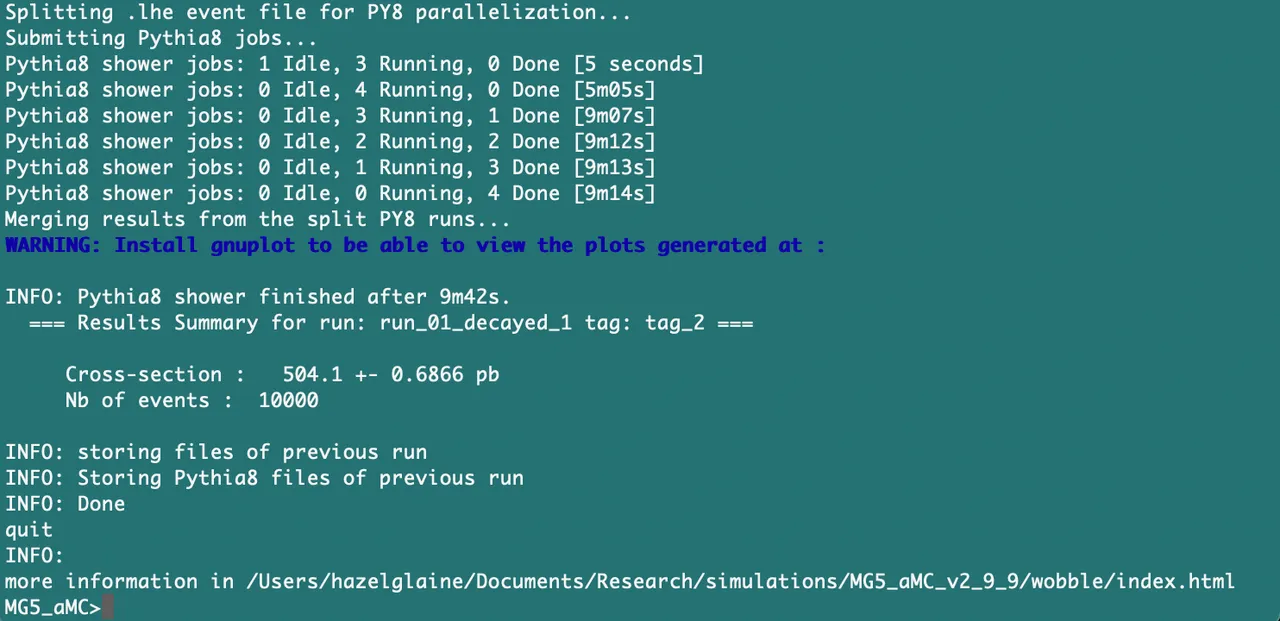
While writing for this report, I went back to the blog where this project was introduced. I was reminded that this project is headed in studying neutrino mass models. I was able to learn about neutrinos in this blog. I had some notes I've taken down while reading the blog and briefly reading some other references:
- Neutrino oscillations are only possible if they have mass, which contradicts the Standard Model.
Neutrino mass models are currently at work with the assumptions that there are three neutrinos different from the SM neutrinos which are all admixtures of the electron, muon, and tau neutrinos of the SM. Each of these has a mass and contains a given amount of each neutrino flavours (a neutrino can be of an electron, a muon, or a tau flavor)
Space chameleons or space cowboys - neutrinos and their mysteries (by Lemouth)- The goal of the experiments is to measure the neutrino masses (determining the upper limit?) and the so-called mixing parameters which dictate the flavour content of each neutrino (there are 6 of those parameter, what are those?)
The last point left me with more questions when I was nearing to having an understanding of what is currently being done in neutrino physics. This is only a part of this new field of study I am trying to pursue but here is where my interest starts. I hope I'd be able to go through the readings I've bookmarked on the next days, and if you have some thoughts/answers too, please feel free to share it with me. :)
